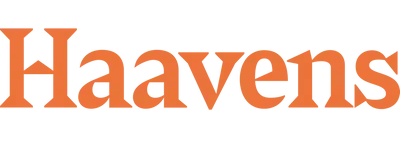Insight into every AESPECT
"The best tool for inspections and MJOPs according to the NEN-2767 and URL"
"The best tool for inspections and MJOPs according to the NEN-2767 and URL"
















































Features
Aespect’s advanced software helps you accelerate your workflow. Photos are automatically converted into 3D models, and your data is securely stored in a cloud environment.
Discover the features Discover the featuresDo you want to save time and costs? With Aespect’s 3D viewer, you can perform precise measurements directly on the model. This allows you to view (real estate) objects in 360 degrees and zoom in on the smallest details. This gives you a complete and realistic representation of all your objects.
Discover the features Discover the featuresAespect generates detailed ortho views on demand. It provides 2D views of entire facades and roofs. This type of facade drawing fully corresponds to reality, including the materials and the condition of the building.
Discover the features Discover the featuresAespect makes NEN-2767 inspections a lot easier. The tool records quantities in accordance with the NL-SfB, and registers defects in accordance with the NEN-2767 and URL standards. Actions for repairs or MJOPs are automatically generated for you and the defects are immediately shown in a 3D model.
Discover the features Discover the features
Links
Aespect enables the exchange of data and information with existing workflows and other systems. This leads to even greater efficiency and improvement for optimal real estate and object management. Aespect can easily be linked to Planon, Vastware, O-Prognose and Bryder.

Support
Do you have any questions or need help? Aespect offers support via multiple channels, such as video, digital meetings, telephony, chat and email. Our team is here to answer your questions, solve problems and guide you. This allows you to work with the software without any obstacles. Experience the convenience of trusted and clear support.
Which inspection standards can you use in Aespect?
(1) Recording building components in the 3D model in accordance with NL/SfB.
(2) Recording defects in 2D (photo, infrared) and 3D data in accordance with the NEN-2767 / URL standard.
Which data and files can I import and export?
Import: it is possible to upload photos and documents. These can be individual photos for internal and external inspections, but also complete datasets to develop a 3D model. The file types supported for upload are: .JPEG, .JPG, .PNG, .TIFF, RAW images and PDF.
Export: it is possible to export the building components, defects, actions and an MJOP. This information can be exported as an Excel file, CSV and PDF. There are also links to Planon, O-Prognose and Bryder.
What features does Aespect have?
Aespect is designed to convert large-scale visual data (photos, 3D models, thermography) into information for inspections, maintenance and renovations. It has primarily been developed for the entire real estate market, with specializations for residential properties, monuments and utilities.
In addition, Aespect has a specific module for the energy market (high-voltage network). Aespect has all of the features necessary to perform and monitor a digital inspection and MJOP and MJOB:
Can Aespect also be used on mobile devices – for example, when I am on location at the object?
Yes, Aespect can also be used on location as a web application on a phone and tablet.
Where can I fly drones?
Most beginners fly in the open category. Strict rules apply in this category to ensure safety. For example, you are not allowed to fly in the vicinity of:
Advanced drone pilots in the specific category are allowed to do this, provided they meet certain conditions and have the necessary permits.
The safest and easiest way to check where you are allowed to fly is to use the GoDrone map. This map provides an up-to-date overview of all no-fly zones and areas where extra caution is required.
Do I need a permit to fly drones? Can Aespect help with that?
You do not need a permit for the open category, but there are some requirements that you must meet:
For the specific category, you require a permit approved by the Human Environment and Transport Inspectorate (ILT). The requirements for the specific category can be complex, with many variables that differ per situation. Aespect can provide support to help you determine what exactly is required and to guide you in obtaining the correct permit.
Which drones connect to Aespect?
Actually, all drones that have a camera can connect. Please note that cheaper cameras with smaller sensors may have lower quality and therefore less accuracy in the model. In general, the recommendation is as follows: as small as possible with the best possible camera (at least a Micro 4/3 sensor).
Aespect recommends using the Mavic 3 series (standard, classic, pro) and the 3 Enterprise (preferred). For other DJI drones, the M300/M350 with at least the DJI P1 camera is recommended. Other payloads can also work; please contact us for advice about this. Using the DJI M30 in combination with Aespect is not recommended. The camera of this device is less suitable.